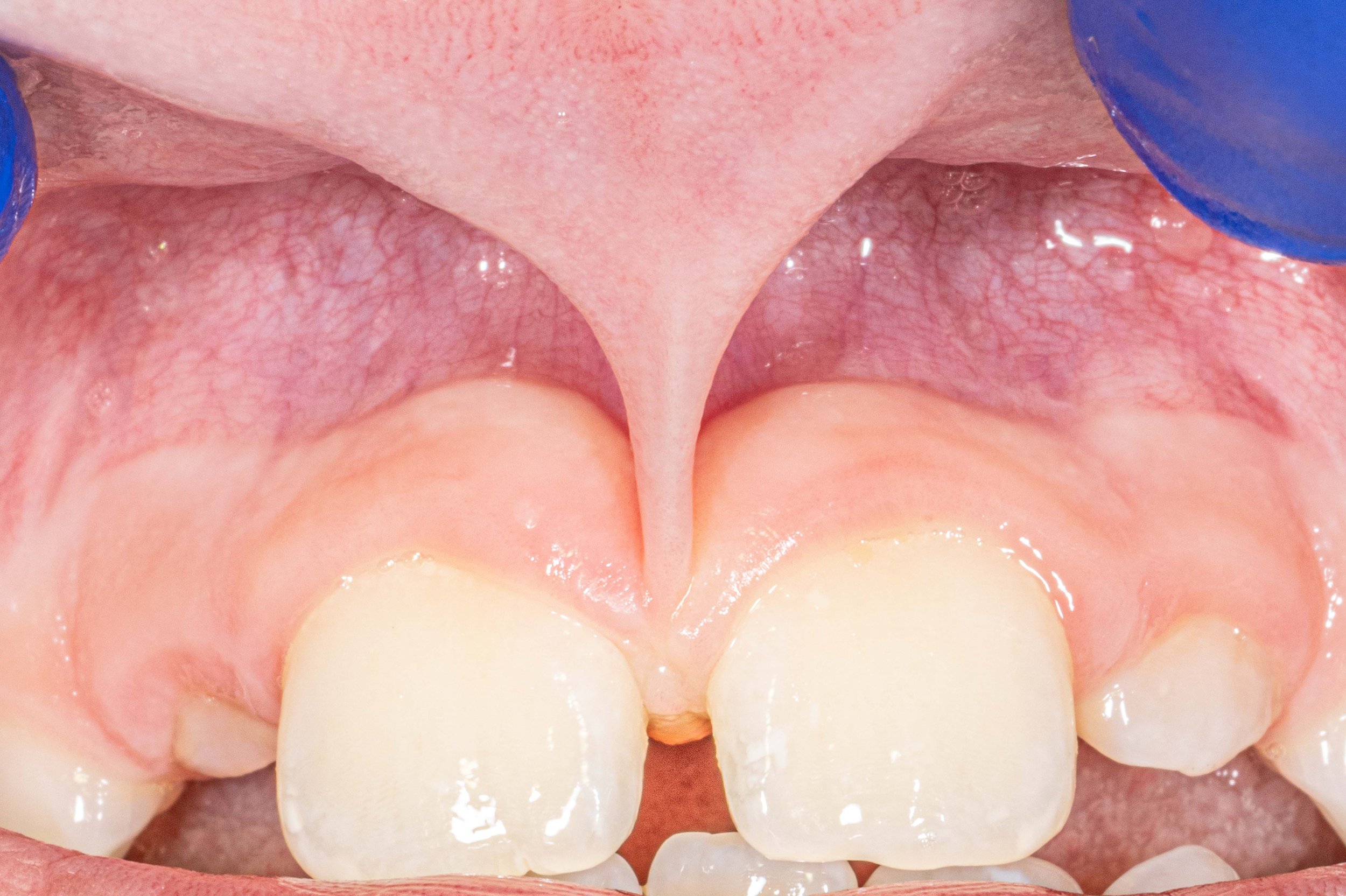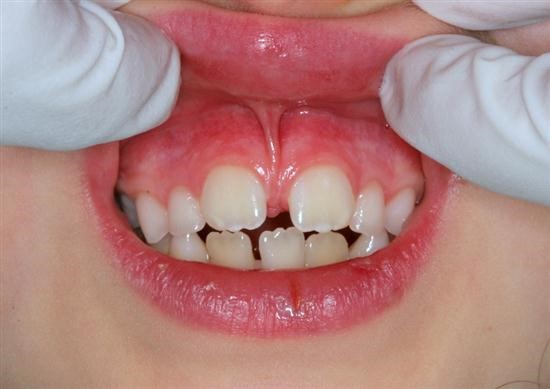A frenectomy is a simple and effective surgical procedure used to remove or modify a frenum — the small fold of tissue that restricts movement in the mouth. This treatment is commonly performed to improve oral function, speech, and dental alignment, and to enhance the success of orthodontic or prosthodontic procedures.
A frenectomy (also known as a frenulectomy or frenotomy) is the removal of a frenulum, a small fold of tissue that prevents an organ in the body from moving too far. It can refer to frenula in several places on the human body. It is related to frenuloplasty, a surgical alteration in a frenulum. Done mostly for orthodontic purposes, a frenectomy is either performed inside the middle of upper lip, which is called labial frenectomy, or under the tongue, called lingual frenectomy. Frenectomy is a very common dental procedure that is performed on infants, children, and adults. A similar procedure frenulotomy is where a tight frenulum may be relieved by making an incision in the tight tissue.
A frenum is a natural band of connective tissue found in several parts of the mouth:
When the frenum is too tight, thick, or improperly attached, it can cause issues such as restricted tongue movement (tongue-tie), speech difficulties, gum recession, or spacing between teeth.

The dentist or oral surgeon examines the location and severity of the frenum attachment.
Local anesthesia is administered to ensure patient comfort.
Using a scalpel or laser, the frenum is cut or reshaped for better flexibility and function.
Some cases require stitches to aid in healing.
Post-procedure care includes oral hygiene guidance and follow-up visits.

It’s a quick, minor procedure done under local anesthesia. Discomfort is minimal and usually resolves within a few days.
It can be done at any age, from infancy (for breastfeeding issues) to adulthood (for speech or dental concerns).
Most patients recover within a week, especially with laser procedures.
Risks are minimal but may include minor bleeding, swelling, or infection—all manageable with proper care.